Kibale National Park is a treasure trove of biodiversity and natural beauty, nestled in the heart of western Uganda. Established in 1993, Kibale covers approximately 795 square kilometres and is renowned for its lush tropical rainforest.
The park has a diverse ecosystem that includes more than 350 species of trees, 375 bird species and 13 species of primates. The 13 species of primates make Kibale the best place in Africa to go if you want to see many different primates in a single place.
Chimpanzees are the most famous residents of the park, but visitors can also spot red colobus monkeys, L'Hoest's monkeys, blue monkeys, and the rare Ugandan mangabey.
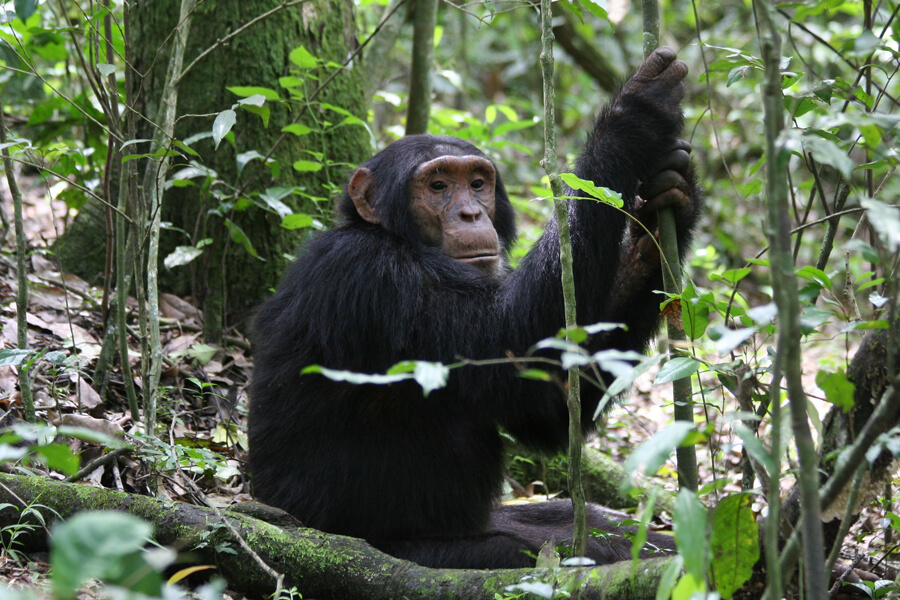
Beyond its wildlife, Kibale's landscape is a mix of lowland tropical rainforests, savannah, and wetlands, providing a variety of habitats that support a rich array of flora and fauna. The park also features numerous crater lakes, swamps, and grasslands, adding to its scenic beauty.
Location & Accessibility
Kibale National Park is located in western Uganda, near the town of Fort Portal, about 320 kilometres (199 miles) from the capital city, Kampala. The park is accessible by both road and air.
By Road
The journey from Kampala to Kibale National Park by road takes approximately 5-6 hours. The route passes through the scenic landscapes of central Uganda, offering travellers a chance to experience the country's natural beauty.
The most common route is via the Kampala-Mityana-Mubende-Fort Portal road, which is well-maintained and offers a smooth drive.
By Air
For those who prefer to fly, there are scheduled domestic flights from Entebbe International Airport to Kasese Airstrip, which is about 75 kilometres (47 miles) from the park. From Kasese, you can drive to Kibale National Park, which takes about 1.5 to 2 hours.
Things to Do (Activities)
Kibale National Park offers a wide range of activities that cater to the different interests of visitors.
1. Chimpanzee Tracking
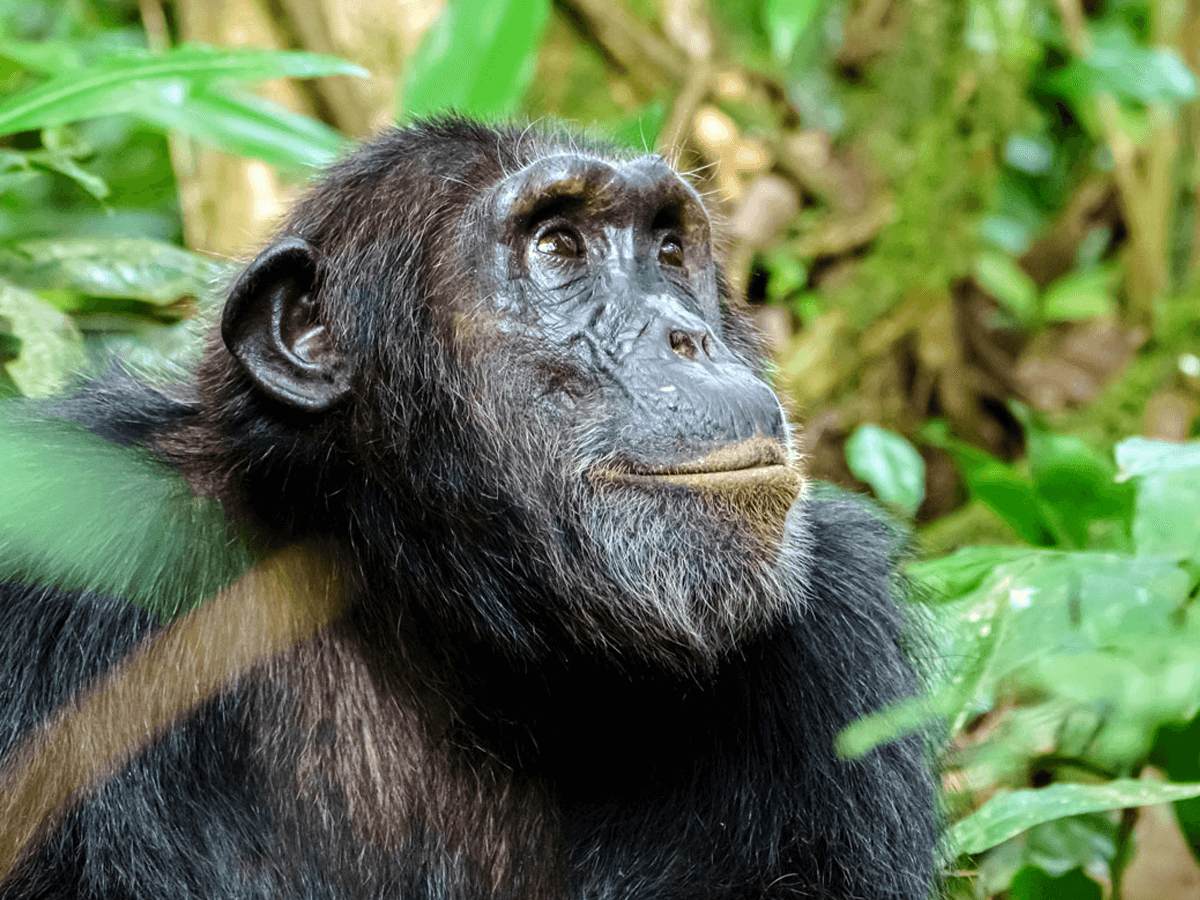
Chimpanzee tracking is the park's main attraction. Guided tours take visitors deep into the forest to observe these fascinating primates in their natural habitat.
The tracking experience usually lasts about 2 to 4 hours, and visitors can spend up to 1 hour with the chimpanzees before going back. The park offers both morning and afternoon tracking sessions.
2. Bird Watching
Kibale National Park is is home to more than 375 species of birds - making it an ideal destination for anyone who is interested in birding. The park guides are very experienced with the parks ecosystem and offer expert help on finding the most sought-after species.
Some notable species include the African grey parrot, black-capped apalis, and the blue-breasted kingfisher.
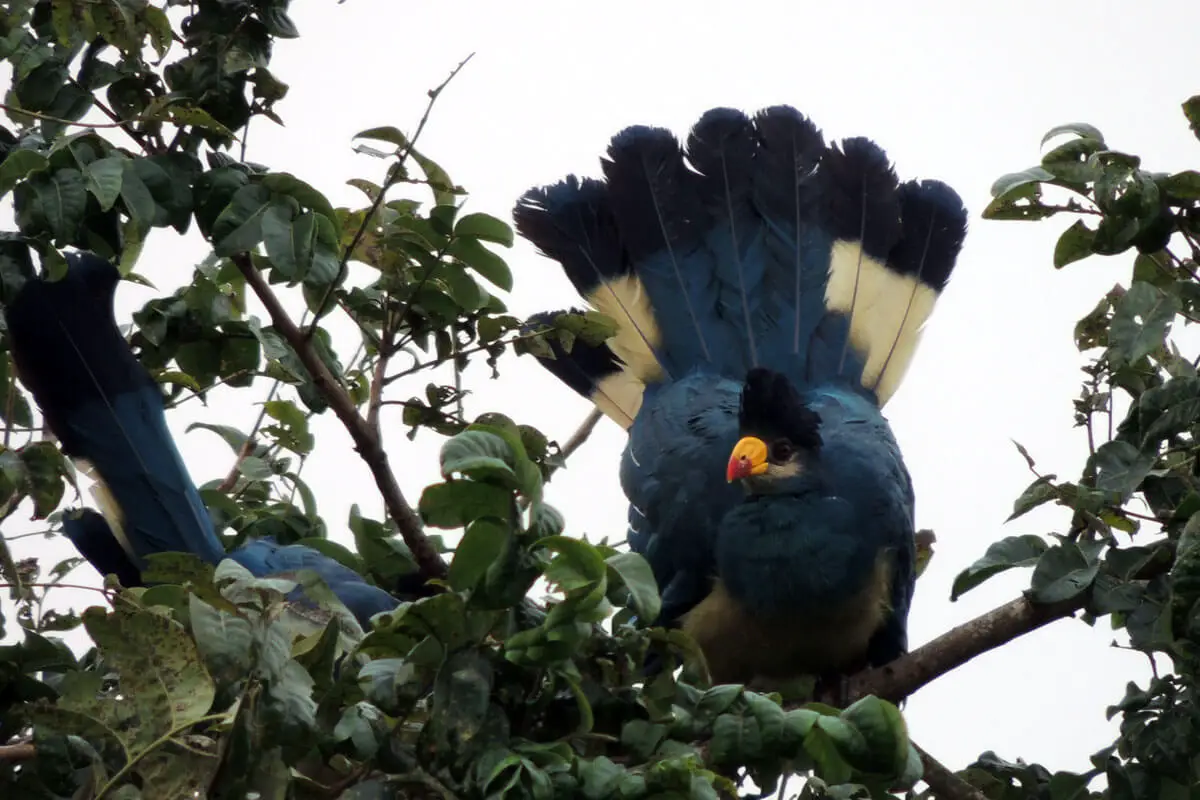
3. Forest Walks
Guided Forest walks are a great way to explore the park's beauty on foot. They offer an immersive experience where you get to enjoy the tranquillity of the forest.
The Bigodi Wetland Sanctuary, located on the edge of the park, is a popular spot for these walks and is known for its rich birdlife and diverse plant species.
4. Nocturnal Walks
For a unique experience, join a nocturnal walk to discover the park's nocturnal inhabitants. These guided walks provide a chance to see bushbabies, pottos, and other nocturnal creatures. The walk is an exciting way to experience the forest's nightlife and observe animals that are rarely seen during the day.
5. Cultural Encounters
Engage with the local communities around Kibale National Park to learn about their life and traditions. The Batooro communities offer cultural tours that include traditional dances, storytelling, and visits to local homesteads. These encounters provide a deeper understanding of the local way of life and the symbiotic relationship between the communities and the park.
Places to Stay
Kibale National Park and its surrounding areas offer a range of accommodation options to suit different budgets and preferences, from luxury lodges to budget-friendly campsites.
1. Luxury Lodges
- Kyaninga Lodge: Perched on the edge of a crater lake, Kyaninga Lodge offers stunning views and luxurious accommodations. The lodge features spacious cottages, a swimming pool, and fine dining options.
- Ndali Lodge: Located on a private estate overlooking the Rwenzori Mountains, Ndali Lodge offers a peaceful retreat with beautifully furnished cottages, a swimming pool, and a restaurant serving delicious meals.
2. Mid-Range Lodges
- Primate Lodge Kibale: Situated within the park, Primate Lodge offers comfortable tented camps and cottages. The lodge is ideally located for chimpanzee tracking and other park activities.
- Chimps' Nest Lodge: Located near the park, Chimps' Nest offers eco-friendly accommodation in a tranquil setting. The lodge features cottages and treehouses, providing a unique forest experience.
3. Budget Accommodation
- Kibale Forest Camp: A budget-friendly option located just outside the park, Kibale Forest Camp offers comfortable safari tents and cottages. The camp provides a relaxed atmosphere and easy access to park activities.
- Chimpanzee Forest Guesthouse: A budget-friendly guesthouse located close to the park, offering comfortable rooms and basic amenities. The guesthouse is ideal for budget-conscious travellers looking to explore the park.
Seasons & Best Time to Visit
Kibale National Park can be visited year-round, but the best time to visit will greatly depend on your interests and activities.
Dry Season
The dry season in Kibale National park happens between the months of June to September and December to February. This is the best time for chimpanzee tracking and forest walks, as the trails are dry and the weather is generally more pleasant.
Other primates, and some of the parks antelopes and forest elephants are easier to come across. However, this is also the peak tourist season, so expect larger crowds of guests who are looking to track the chimpanzees.
Wet Season
The wet season in Kibale happens between the the months of March to May and October to November. The landscape is even more lush, and the colourful birds are singing at every turn.
The forest trails can be a bit muddy due to the rain - making it a bit challenging (and exciting), but the fewer crowds offer a more intimate connection to the nature around you.
Bird watching is particularly rewarding during this time, as migratory birds are present.
Climate Chart
Here’s a climate chart for Kibale National Park, showing the average monthly rainfall and temperatures.
| Month | Avg. Temp (°C) | Avg. Temp (°F) | Avg. Rainfall (mm) |
|---|---|---|---|
| January | 24 | 75.2 | 60 |
| February | 25 | 77 | 85 |
| March | 24 | 75.2 | 130 |
| April | 23 | 73.4 | 175 |
| May | 23 | 73.4 | 150 |
| June | 22 | 71.6 | 95 |
| July | 22 | 71.6 | 75 |
| August | 22 | 71.6 | 85 |
| September | 23 | 73.4 | 110 |
| October | 23 | 73.4 | 165 |
| November | 23 | 73.4 | 150 |
| December | 23 | 73.4 | 80 |
Nearby Attractions
While Kibale National Park is a highlight, there are several nearby attractions worth exploring.
1. Queen Elizabeth National Park
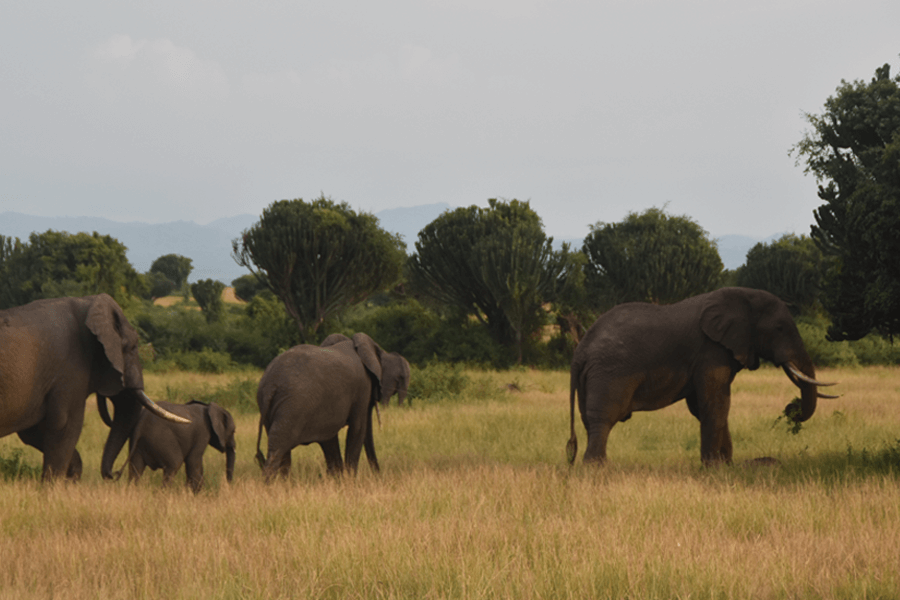
Located around 100 kilometres (62 miles) south of Kibale, Queen Elizabeth National Park is famous for its diverse ecosystems, including savannah, wetlands, and forests. The park is home to a wide variety of wildlife, including elephants, lions, leopards, hippos, and more than 600 species of birds.
The Kazinga Channel, which connects Lake Edward and Lake George, is a popular spot for boat safaris - where large pods of hippos can be seen up close.
2. Rwenzori Mountains National Park
The Rwenzori Mountains, also known as the "Mountains of the Moon," are located about 50 kilometres (31 miles) west of Kibale. The park offers challenging hiking opportunities, with stunning views of glaciers, waterfalls, and diverse vegetation zones.
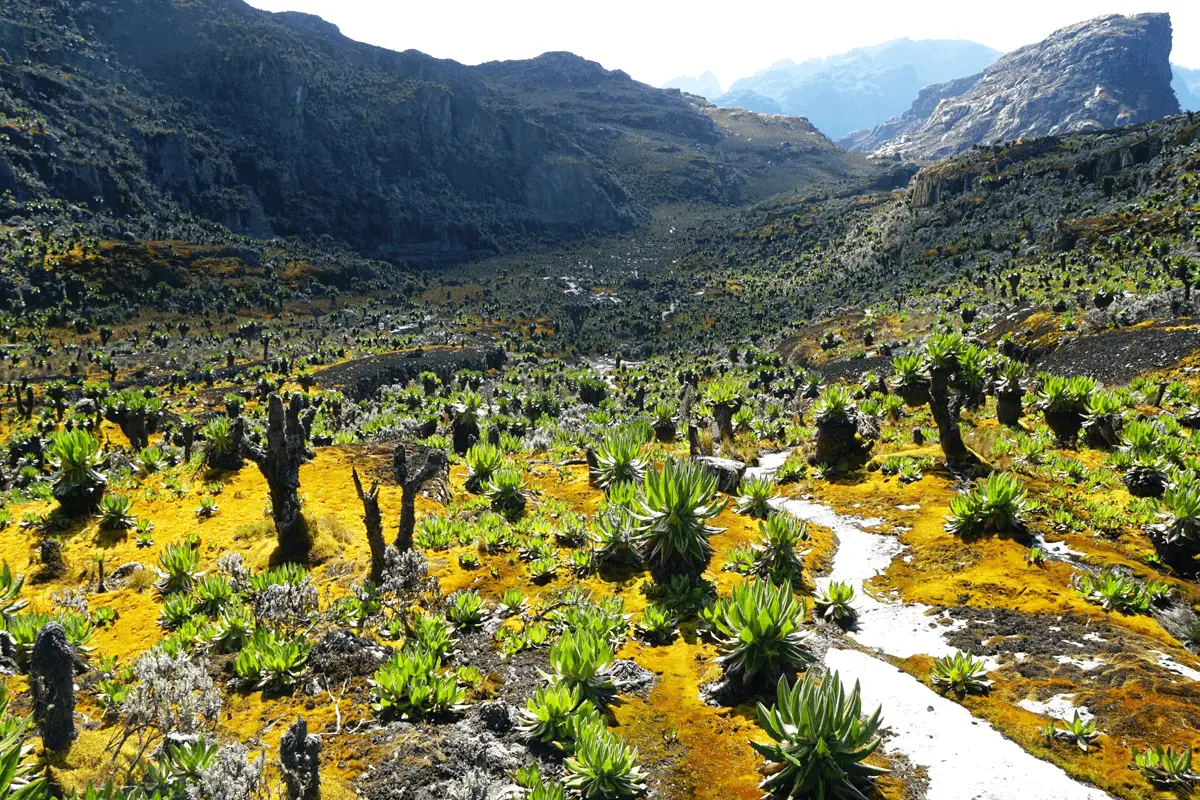
The highest peak - Margherita Peak, stands at 5,109 meters (16,762 feet) and is a popular destination for experienced climbers. It is also Africa's toughest peak to summit, but everyone who has climbed it, says the experience is worth every bit of the challenge.
3. Semuliki National Park
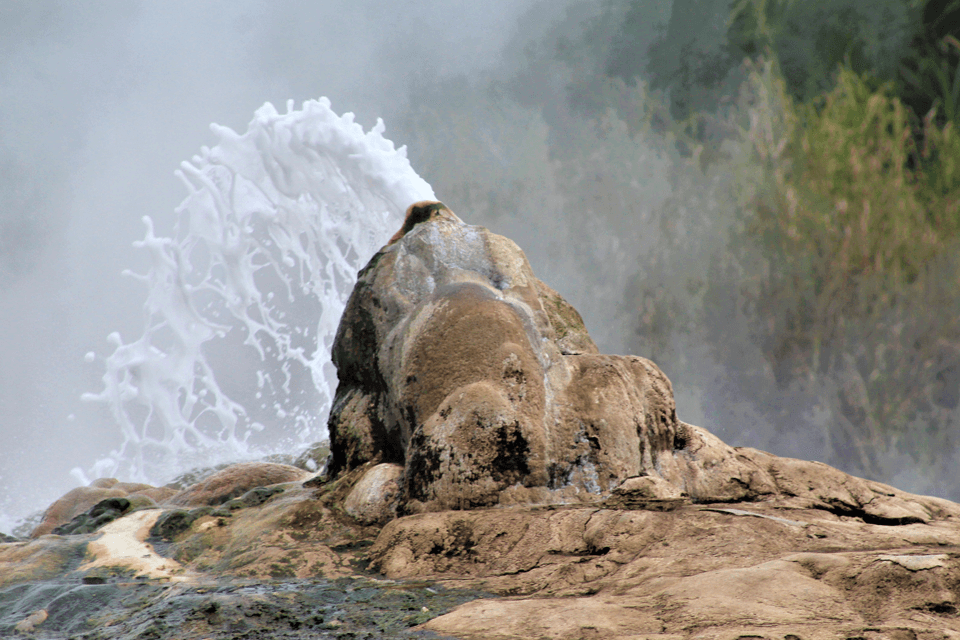
Situated to the north of Kibale, Semuliki National Park is known for its unique biodiversity and hot springs.
Semuliki has a landscape and ecosystem that is a mix of East African and Central African flora and fauna - unlike anywhere else in East Africa. The park's tropical lowland forest is home to a variety of wildlife, including forest elephants, chimpanzees, and numerous bird species.
The Sempaya Hot Springs are a major attraction, where visitors can observe boiling water emerging from the ground.
4. Crater Lakes
The region around Kibale is dotted with numerous crater lakes, offering stunning scenery and opportunities for exploration.
Lake Nkuruba, Lake Nyinambuga, and Lake Nyabikere are some of the most beautiful crater lakes in the area. Visitors can enjoy activities such as hiking, bird watching, and swimming in the pristine waters.
Closing Thoughts
In as much as Kibale National park is known for its primates - especially as the best place in the world to see chimpanzees, the park offers much more. It's location near other beautiful places and attractions make it an idea hub for any visitors who would like to see chimpanzees, but also explore water falls, hot springs, craters, local culture, savannah wildlife or even take on Africa's toughest mountain climbing adventure - the Rwenzori.
If you are thinking about visiting Uganda, and seeing the chimpanzees in Kibale, you will have a wonderful time and should your schedule allow, don't leave to fast before exploring the neighbourhood.
